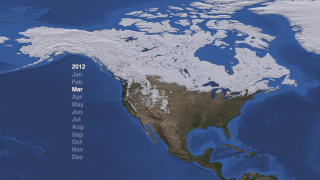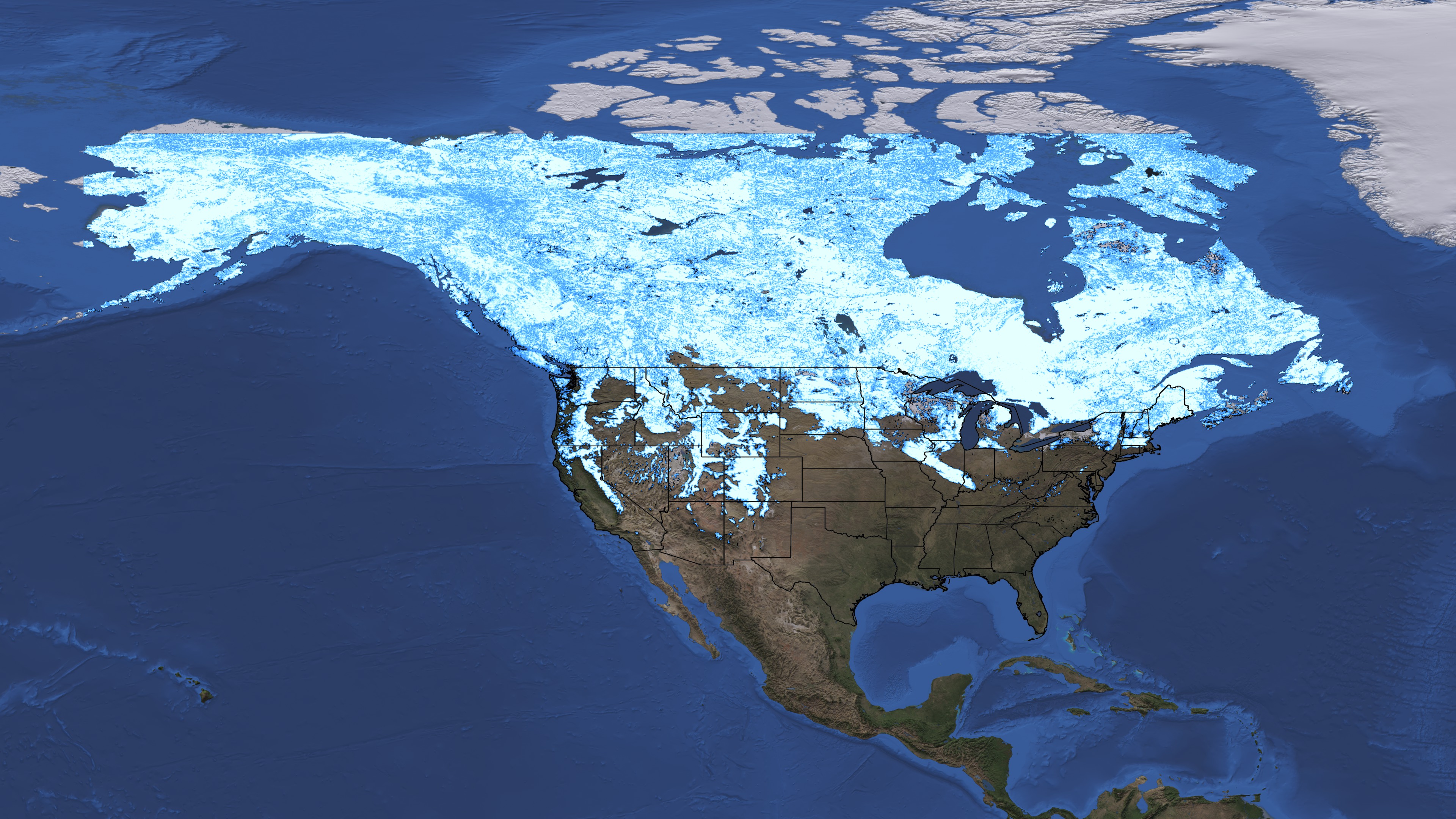Winter, Interrupted
In 2010 and 2011, North America had two snowy winters, punctuated by monster storms that shut down cities from Denver to Washington DC. But this year saw fewer big storms, and by early March areas of the U.S. usually still dressed in white were mostly bare due to below average snowfall and above average temperatures that made this the fourth warmest winter on record. The heavy snows in 2010 were partly caused by El Niño, which drew moisture from the Pacific Ocean and Gulf of Mexico that froze above the lower 48 states upon contact with sinking cold air from the Arctic. However, La Niña conditions in 2012 resulted in the Pacific Ocean's moist air being pushed to the far North, where storms dumped near-record snowfall in Alaska. Watch the visualization below, based on data collected by NASA's Aqua and Terra satellites, to see how snow cover has varied over North America from July 2009 to March 2012.

North America's mild winter has people asking, "Where's the snow?"
Winter's no-show: Snow cover in 2012 stands in stark contrast to the previous two years.

March snow cover extent for the contiguous U.S. was the seventh-largest on record in 2011.

The early arrival of spring-like temperatures limited snow cover over much of the U.S. in March 2012.

Snow cover was below average across the Sierra Nevada, the Great Basin and Cascade Range in Dec. 2011.

Pristine snow blankets Alaska's mountains and plains on Jan. 15, 2012, as seen in this true-color image captured by NASA's Aqua satellite.
For More Information
See NASA.gov
Credits
Please give credit for this item to:
NASA's Goddard Space Flight Center
Alaska true-color satellite image courtesy of NASA/GSFC/Jeff Schmaltz/MODIS Land Rapid Response Team
-
Animators
- Helen-Nicole Kostis (USRA)
- Cindy Starr (Global Science and Technology, Inc.)
-
Producers
- Rani Gran (NASA/GSFC)
- Malissa Reyes (USRA)
-
Scientists
- Dorothy Hall (NASA/GSFC)
- Jeffrey A. Miller (Wyle Information Systems)
- Thorsten Markus (NASA/GSFC)
-
Writer
- Ellen T. Gray (ADNET Systems, Inc.)
Release date
This page was originally published on Thursday, March 29, 2012.
This page was last updated on Wednesday, May 3, 2023 at 1:53 PM EDT.

